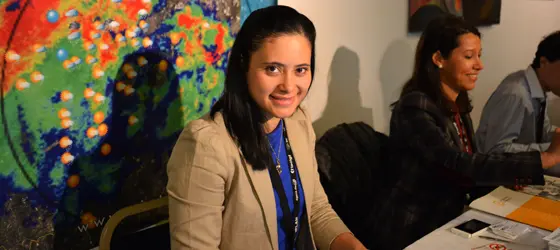Real Time Weather Alerts
01/10/2013

The SIATA project, a system for providing early weather warnings developed by the city of Medellin, was presented with the 2013 Frida Award in the Development category.
A pioneer in Colombia, the SIATA project integrates information technology and telemetry to measure natural phenomena and automatically broadcasts real-time weather data on digital media so that alerts can quickly reach the population.
SIATA produces readily accessible scientific information in a format that makes it easy for the community to understand. Maria Isabel Marin Morales, one of the project’s leaders, told Lacnic News that this initiative bridges the gap between citizens, government and the scientific community.
What are the most relevant aspects of the Early Warning System for Medellin and the Aburra Valley? What impact has the project had on local communities?
The Early Warning System for Medellin and the Aburra Valley (SIATA) is a project developed by the city of Medellin and the Aburra Valley Metropolitan Area with the support of EPM and ISAGEN. Among the most relevant aspects of the project I would like to highlight that it has now become a standard bearer for risk management, not only for the department but also for Colombia.
The only one of its kind in Colombia, this project provides real-time meteorological information and seeks to provide timely alerts to both responders and the community in general regarding extreme hydro-meteorological events (extreme rainfall, flooding, landslides) that may pose a threat to human life, homes and, in general, to the quality of life of the Aburra Valley inhabitants.
The project has been very well received by the community: Twitter interactions show just how the information has been appropriated by the community. Frequent users of information produced by the system include motorcyclists, firefighters, sportsmen and women, to name but a few. In addition, the number of visits to the portal (which increases on rainy days) shows that the information produced by the system is of practical use for the community. In addition, the project’s dissemination and outreach strategies also include educational visits to the operations center.
When we hear the students of Medellin and the Metropolitan Area of the Aburra Valley talk about convective processes, reflectivity levels and rainfall thresholds, we see a reflection of an educational and pedagogical structure that has been working intensely with those who will be the future responders to the early warning system.
What prompted you to participate in FRIDA’s call for proposals?
Because it is an international program, FRIDA provides all participants –especially winners– with international visibility. In addition, it provides funding to support new initiatives. These two reasons motivated our participation, as we believe that having local projects gain both regional and international attention is important for their scalability, cooperation and consolidation. FRIDA provides these opportunities.
What experiences have you gained from your first participation in the FRIDA awards and the Cordoba meeting?
The awards ceremony and the event itself are dissemination platforms for the SIATA project. We were able to show the most relevant aspects of the project to various Latin American and Caribbean stakeholders, and this has allowed us to be noticed throughout the region.
Forum attendees showed great interest in the projects that were presented with the FRIDA Awards, inquiring with each project’s representatives to gain a better understanding of their nature. In particular, SIATA was able to generate contacts with stakeholders from our own country [Colombia], as well as from Argentina and El Salvador.
The Cordoba meeting helped us strengthen the project and create networking opportunities not only at national but also at international level.
It made it clear to us that FRIDA’s work is very important for projects that seek to create content that will allow the Internet to become an engine for growth and sustainable development.
(Free access, no subscription required)